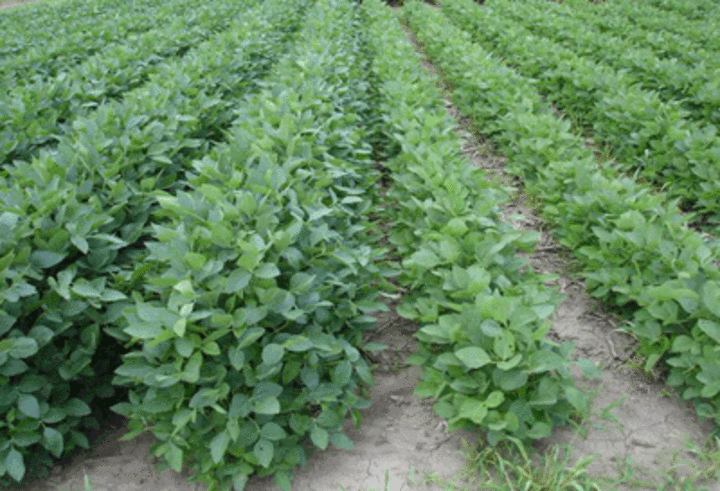April 17, 2009
Benefits from early planting of irrigated soybeans (May 1-10 as opposed to late May) has been documented by university researchers and producers in the Midwest. (See April 10 CropWatch story and Iowa State University Soybean Planting Date factsheet.) However, a question has come up as to whether this recommendation extends to rainfed soybeans in Nebraska.
UNL agronomist and soybean researcher Jim Specht says it does apply to rainfed soybeans, as long as you consider making changes in the maturity of the cultivars you use for early planting.
Extending the Growing Season
When planting rainfed soybeans, optimization of available water throughout the season is a key factor to its success. One way to capture as much precipitation as possible is to plant early, even with rainfed soybeans, and use a longer season variety that can take advantage of both early and late season rains. (See the April 10 CropWatch story, Why Soybean Planting Date Does Matter in Nebraska.) Often, areas of central and eastern Nebraska may have a full soil water profile by mid April. If soybean planting is delayed until mid to late May, many of the spring rains may be wasted without a crop growing to use the water.
Changing Cultivars
Planting early — by May 1 — with the same soybean variety that would have been used with a later planting date, may be risky. When early-maturing soybean varieties are planted earlier, they reach the pod fill stage earlier, quite possibly during the hottest and often driest part of the growing season.
Specht writes in an online discussion group that this could hasten plant senescence, which effectively shortens the seed-filling period and thus, also lessens seed yield. He writes, "Any drought-induced hastening of senescence is, in turn, exacerbated by heat, and because drought and heat tend to be (environmentally) correlated, the impact of late season heat and drought on yield can be large."
That's why Specht recommends changing to a longer season variety adapted for your location. He writes that the seed-filling period of these longer-season varieties would occur later in the season, theoretically when it's not as hot. These longer season varieties also may be better able to capture late-summer rains. Of course, if you use a variety with too long a growing season, you're apt to run up against an early fall frost that also could rob you of crop yield. (Check average last spring and first fall freeze dates at http://www.hprcc.unl.edu/maps/atlas/.)
Producers of rainfed soybean interested in moving their planting date forward to early May should choose varieties with a quarter or a half unit longer relative maturity (RM) than they would normally choose for a late May planting.. For example, a rainfed soybean producer wanting to plant earlier should switch from a 2.0 maturity to a 2.3 or 2.5 RM in northern Nebraska or from a 3.0 to a 3.3 or a 3.5 RM in southern Nebraska to ensure that the seed-filling period will be more likely to occur when temperatures are cooler but before the first fall frost.
Conducting Your Own Research
If you'd like to study this or other cropping practice questions on your farm through a research trial, contact one of the Extension educators listed in this related article or visit UNL's On Farm Research Web site at http://farmresearch.unl.edu. The site includes research results, program descriptions, and information on designing your own on-farm research comparison.
Lisa Jasa
CropWatch Editor

Soybeans near York, planted on May 5 (left) closed crop canopy early while those on the right, planted June 11, had not by July 25, more than a month after the longest day of the year. Late planted beans have about half as many yield-producing pods as early planted beans. Sunlight energy is striking bare soil rather than being absorbed by the plants for photosynthesis.
Machinery Management with Early Planted Beans
Nebraska producers usually plant all their corn, followed by their soybeans. Since both corn and soybean can show yield benefits from early planting, does the traditional planting pattern need an adjustment to ensure growers get the most return?
Depending on the size of your operation and yield expectations, you may want to consider whether there is an economic advantage to getting both crops into the ground sooner by using a larger planter or running two planters at once.
When it comes to machinery management for planting, UNL Extension Engineer Paul Jasa suggests having two-thirds of the crop planted by the optimum date. Usually, the slight yield hit taken for planting too early is less than the yield hit taken for planting late, Jasa said. In some cases, there's an economic advantage to hiring a custom planter to ensure the crop gets in closer to May 1, he said.
Starting early also provides more leeway if weather delays planting. Typically, machinery is sized so the crop can be planted in 10 days, Jasa said. If soybean planting doesn't start until May 20 and then is interrupted by a couple days of rain, planting won't be completed until early June, which will likely lead to lower yields.
Effect of Planting Date on a Timely Harvest
There is more to managing your planting date than just yield, Jasa noted. Each producer needs to also consider how changes affect other aspects of their cropping system. When planting dates are spread, the harvest workload also will be spread. This allows more beans to be harvested closer to the 13% moisture content allowed by the market, rather than losing money by selling overly dry beans (50 bu/ac at 8% is about the same as 47.3 bu/ac at 13% moisture). Also, planting a short season bean early may allow wheat to be planted after harvest.
